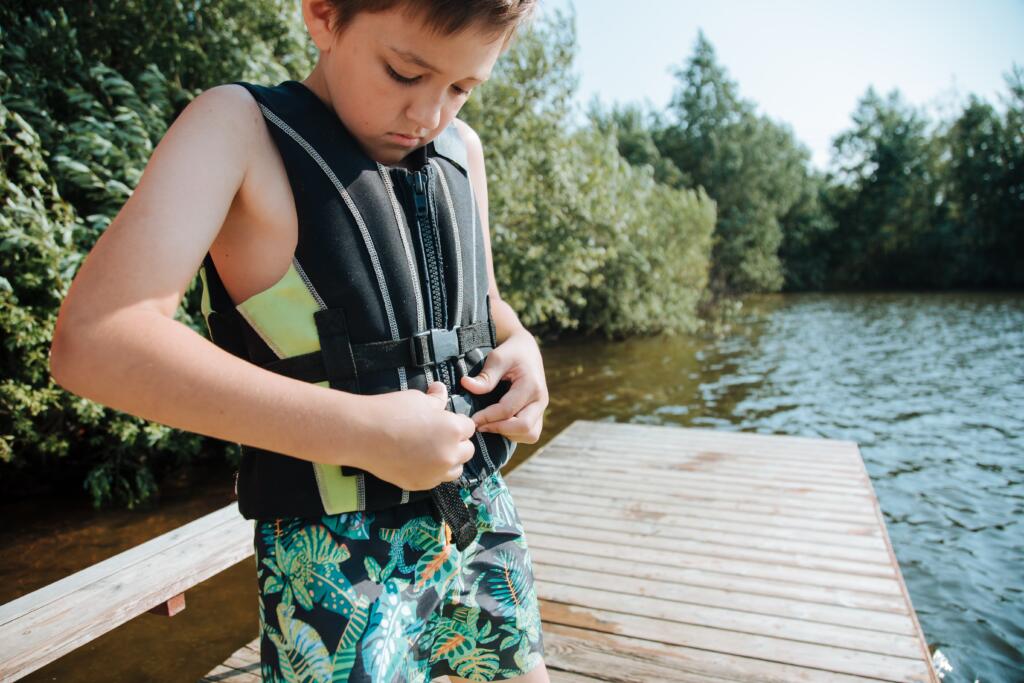
One of the best safety measures that you can rely on while out on the water is the use of personal flotation devices (PFDs).
A personal flotation device, also referred to as a life jacket or life preserver, is a piece of equipment designed to assist a wearer, who may be either conscious or unconscious, to keep afloat.
In case you’re wondering, you can check your state’s PFD requirements here.
The bottom line is that PFD’s save lives. But, these devices will only work as they should if they are maintained and stored properly between uses.
Here are a few tips on how to store and maintain your personal flotation devices to be sure they’re always ready to go at a moment’s notice.
Cleaning Your Personal Flotation Device

To keep PFDs clean, all you need to do is wipe them down with a solution of mild soap and warm water and then rinse thoroughly. When cleaning stains from life jackets, use a stiff-bristled brush to gently scrub them away, but avoid using bleach, solvents, or other stain removers. The strong chemicals in these products can break down the materials PFDs are made from, thereby compromising their integrity. When exposed to saltwater, a quick rinse is needed to remove residue before allowing your device to dry.
After washing your PFD, hang it up in the open air away from direct sunlight and leave it there to dry thoroughly before storing it. Never place it in the dryer or near a heat source, as this could cause the vinyl or plastic components to warp or crack. Personal flotation devices should never be dry cleaned.
Inspecting Your Flotation Device

Flotation devices should be inspected on a regular basis, preferably before each use. Some of the things you should look for include:
- Broken or damaged hardware
- Ripped, torn, or missing webbing
- Webbing that has become unattached
- Mold or mildew
- Rotted material
- Large rips or tears
- Oil spills, as this could affect buoyancy
Inflatable vests should also be inspected for:
- Bobbins and pins that aren’t operating properly
- Evidence of any corrosion on the CO2 cartridges
- Nozzles that have not been punctured by the firing needle
It is also a good idea to manually inflate vests from time to time in order to check for leaks. Allow them to remain inflated overnight to be sure they are working properly, and repair or discard any that are not holding air as they should.
Storing PFDs

Boating laws typically require that PFD’s are readily accessible to all passengers onboard a vessel. Make sure that your PFDs are actually taken out of the plastic wrapper they came in prior to use. The U.S. Coast Guard does not consider these devices to be ‘readily accessible’ if they must be unwrapped first. In addition, you must generally carry a throwable device onboard all watercraft that is 16 feet in length or longer.
When you’re not on the water, you should store flotation devices in a cool dry area with adequate ventilation. Avoid placing them in direct sunlight, as UV rays could prove harmful to them. Hang them up whenever possible rather than placing them on a shelf or the bottom of a locker. If hanging them up isn’t possible, make sure heavy objects are not placed on top of them, as this can also cause damage.
Personal flotation devices play an important part in keeping you safe on the water. Although it might seem trivial, properly cleaning, inspecting, and storing your PFD’s will go a long way to make absolutely sure that they are functional and in good working order for when you need them.

